Raquel Norel
Leveraging Large Language Models for Patient Engagement: The Power of Conversational AI in Digital Health
Jun 19, 2024



Abstract:The rapid advancements in large language models (LLMs) have opened up new opportunities for transforming patient engagement in healthcare through conversational AI. This paper presents an overview of the current landscape of LLMs in healthcare, specifically focusing on their applications in analyzing and generating conversations for improved patient engagement. We showcase the power of LLMs in handling unstructured conversational data through four case studies: (1) analyzing mental health discussions on Reddit, (2) developing a personalized chatbot for cognitive engagement in seniors, (3) summarizing medical conversation datasets, and (4) designing an AI-powered patient engagement system. These case studies demonstrate how LLMs can effectively extract insights and summarizations from unstructured dialogues and engage patients in guided, goal-oriented conversations. Leveraging LLMs for conversational analysis and generation opens new doors for many patient-centered outcomes research opportunities. However, integrating LLMs into healthcare raises important ethical considerations regarding data privacy, bias, transparency, and regulatory compliance. We discuss best practices and guidelines for the responsible development and deployment of LLMs in healthcare settings. Realizing the full potential of LLMs in digital health will require close collaboration between the AI and healthcare professionals communities to address technical challenges and ensure these powerful tools' safety, efficacy, and equity.
Remote Inference of Cognitive Scores in ALS Patients Using a Picture Description
Sep 13, 2023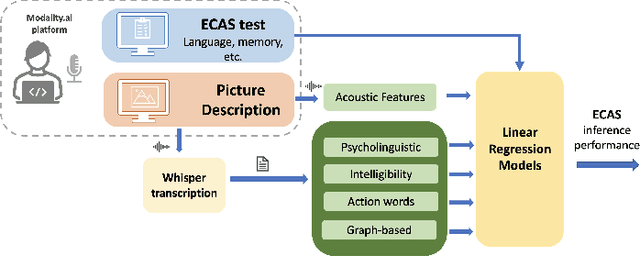
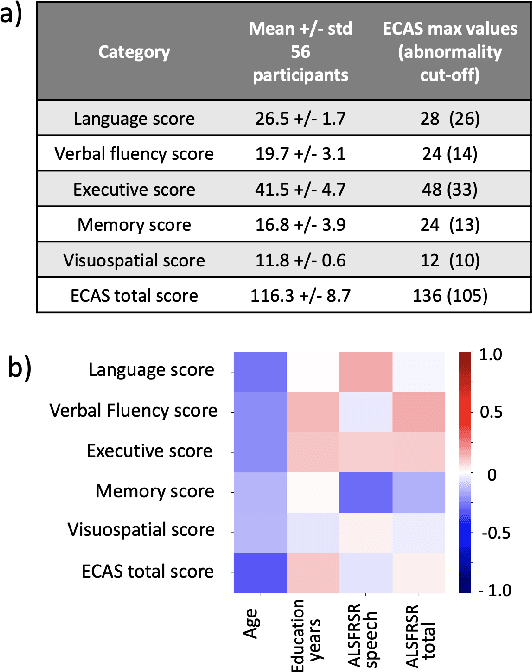
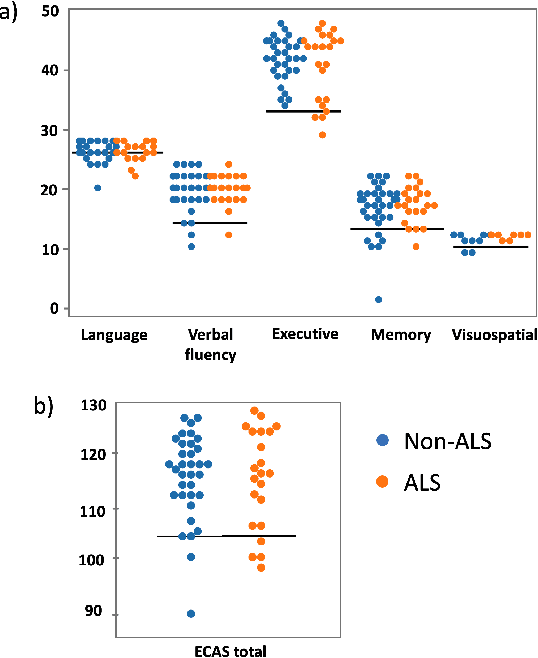
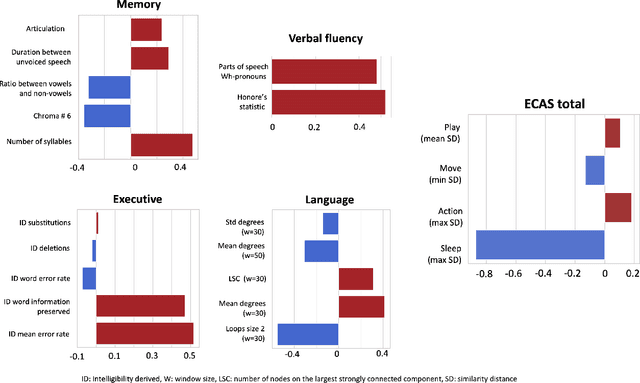
Abstract:Amyotrophic lateral sclerosis is a fatal disease that not only affects movement, speech, and breath but also cognition. Recent studies have focused on the use of language analysis techniques to detect ALS and infer scales for monitoring functional progression. In this paper, we focused on another important aspect, cognitive impairment, which affects 35-50% of the ALS population. In an effort to reach the ALS population, which frequently exhibits mobility limitations, we implemented the digital version of the Edinburgh Cognitive and Behavioral ALS Screen (ECAS) test for the first time. This test which is designed to measure cognitive impairment was remotely performed by 56 participants from the EverythingALS Speech Study. As part of the study, participants (ALS and non-ALS) were asked to describe weekly one picture from a pool of many pictures with complex scenes displayed on their computer at home. We analyze the descriptions performed within +/- 60 days from the day the ECAS test was administered and extract different types of linguistic and acoustic features. We input those features into linear regression models to infer 5 ECAS sub-scores and the total score. Speech samples from the picture description are reliable enough to predict the ECAS subs-scores, achieving statistically significant Spearman correlation values between 0.32 and 0.51 for the model's performance using 10-fold cross-validation.
PainPoints: A Framework for Language-based Detection of Chronic Pain and Expert-Collaborative Text-Summarization
Sep 14, 2022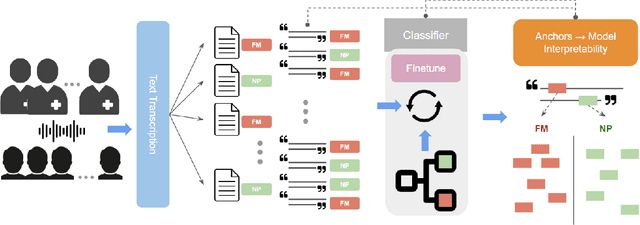
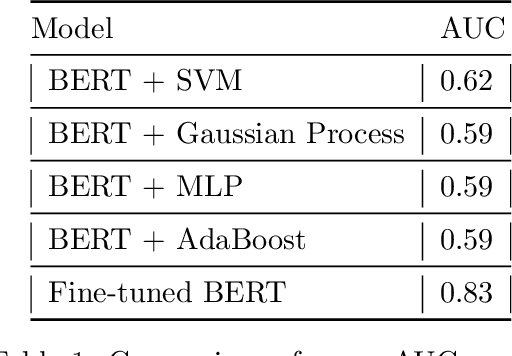
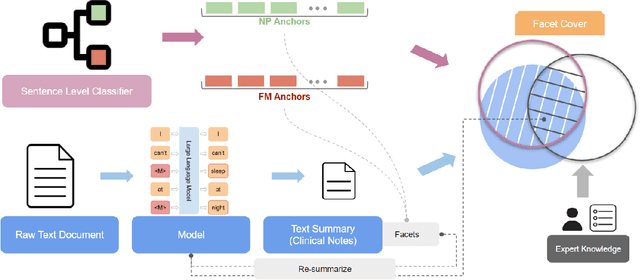

Abstract:Chronic pain is a pervasive disorder which is often very disabling and is associated with comorbidities such as depression and anxiety. Neuropathic Pain (NP) is a common sub-type which is often caused due to nerve damage and has a known pathophysiology. Another common sub-type is Fibromyalgia (FM) which is described as musculoskeletal, diffuse pain that is widespread through the body. The pathophysiology of FM is poorly understood, making it very hard to diagnose. Standard medications and treatments for FM and NP differ from one another and if misdiagnosed it can cause an increase in symptom severity. To overcome this difficulty, we propose a novel framework, PainPoints, which accurately detects the sub-type of pain and generates clinical notes via summarizing the patient interviews. Specifically, PainPoints makes use of large language models to perform sentence-level classification of the text obtained from interviews of FM and NP patients with a reliable AUC of 0.83. Using a sufficiency-based interpretability approach, we explain how the fine-tuned model accurately picks up on the nuances that patients use to describe their pain. Finally, we generate summaries of these interviews via expert interventions by introducing a novel facet-based approach. PainPoints thus enables practitioners to add/drop facets and generate a custom summary based on the notion of "facet-coverage" which is also introduced in this work.
Investigating the Utility of Multimodal Conversational Technology and Audiovisual Analytic Measures for the Assessment and Monitoring of Amyotrophic Lateral Sclerosis at Scale
Apr 15, 2021
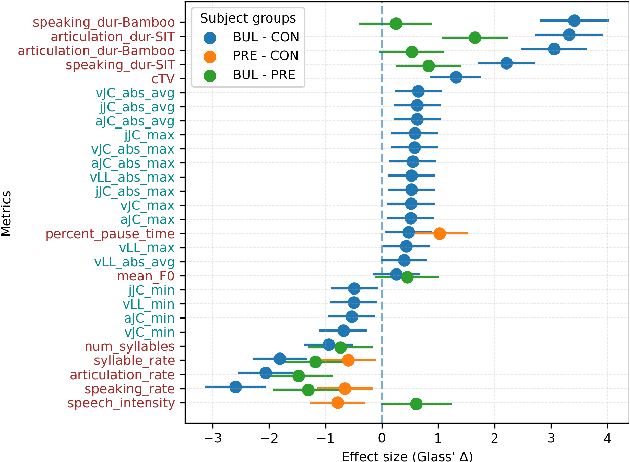
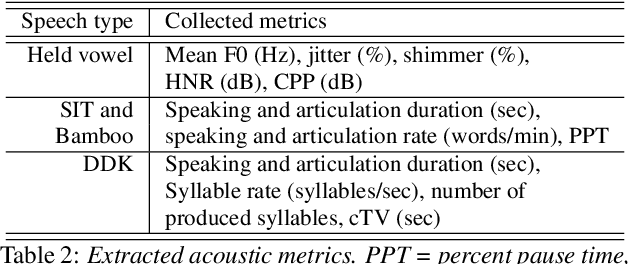

Abstract:We propose a cloud-based multimodal dialog platform for the remote assessment and monitoring of Amyotrophic Lateral Sclerosis (ALS) at scale. This paper presents our vision, technology setup, and an initial investigation of the efficacy of the various acoustic and visual speech metrics automatically extracted by the platform. 82 healthy controls and 54 people with ALS (pALS) were instructed to interact with the platform and completed a battery of speaking tasks designed to probe the acoustic, articulatory, phonatory, and respiratory aspects of their speech. We find that multiple acoustic (rate, duration, voicing) and visual (higher order statistics of the jaw and lip) speech metrics show statistically significant differences between controls, bulbar symptomatic and bulbar pre-symptomatic patients. We report on the sensitivity and specificity of these metrics using five-fold cross-validation. We further conducted a LASSO-LARS regression analysis to uncover the relative contributions of various acoustic and visual features in predicting the severity of patients' ALS (as measured by their self-reported ALSFRS-R scores). Our results provide encouraging evidence of the utility of automatically extracted audiovisual analytics for scalable remote patient assessment and monitoring in ALS.
 Add to Chrome
Add to Chrome Add to Firefox
Add to Firefox Add to Edge
Add to Edge